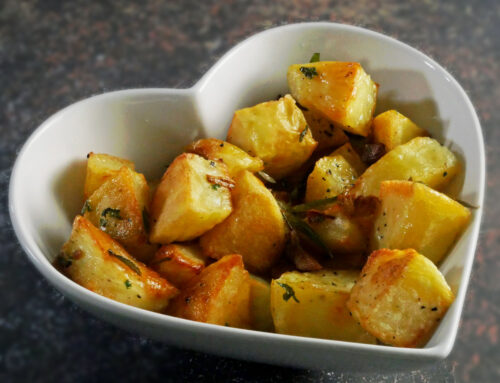spelled flour recipes are an essential baking ingredient that can be used for a variety of different recipes. The versatility of this unique flour would be the one thing that makes it invisible in your pantry, but it must be mentioned because spelled has certain nutritional benefits which are worth the low-carb pursuit. A couple of these are amazing and include spelled flour’s light color and nutritional benefits like the fact that it is rich in magnesium, lysine, and phosphorus, make sure to regularly include this nutritious grain in your diet.
Find Your Favorite Spelt Flour:
Organic Brand Spelt Flour (Non-GM): This HARD RED MILL JUNKET is our top favorite when talking about organic spelled flour. Unlike wheat which can be both genetically modified and pesticide sprayed, real-spelled flour recipes is a great alternative.
This HARD-RED MILL JUNKET is our top favorite when talking about organic spelled flour. Unlike wheat that can be both genetically modified and pesticide sprayed
What is Spelt Flour?
spelled flour recipe is a type of flour made from wheat that has been ground with an outer bran layer left on. The flour is also sometimes referred to as farro, barley, or einkorn.
Unlike other types of flour, spelled flour doesn’t contain gluten which makes it suited for people who are gluten-free. Spelled flour is also high in fiber which can help with digestion and weight loss.
Spelled flour can be used in many different recipes and can be substituted for other types of flour in most recipes without any adjustments. It can sometimes be difficult to find yeast products that are made from spelled flour. This is because the grain’s bran layers may sometimes cause the yeast created to not rise properly, causing the dough to rise too quickly. Sometimes it can also make it more difficult for your own yeast to do its job when using spelled flour instead of other types of dough as yeast living in a grain loses strength after they have been used once.
How to Prepare Spelt Flour
spelled flour recipes are whole grain flour made from the sprouted kernel of a wheat seed. It has a nuttier flavor than other whole-grain flour and is an excellent source of fiber, protein, and vitamin E.
To prepare spelled flour, rinse and drain the spelled grain several times in a fine mesh strainer. In a large bowl, combine the spelled with water to cover and stir well to combine. Set aside for at least 30 minutes or up to 12 hours. The longer you let the flour sit, the more intense its flavor will be.
Once the mixture has sat for 30 minutes or more, use your hands to rub it together until it resembles breadcrumbs. If needed, add additional water until the mixture feels wet but not sticky. Note that the final dough will be very wet- not sticky- so do not overmix it.
Once the dough is fully combined, divide it into 2 or 3 parts and shape each into a small ball. Place on a piece of greased parchment paper and let rest for 10 minutes before rolling out into desired shape(s). Try not to overwork the dough- if it becomes too stiff, let it relax in the refrigerator for 10 minutes and continue.If the dough has not been chilled, place it in a bowl that has been chilled in the freezer for at least 30 minutes. Thaw when ready to use (if frozen).
Who Can Use Spelt Flour?

Spelled flour is a type of flour made from ancient wheat strains that have been left to sprout. As a result, spelled flour has a nutty flavor and a slightly chewy texture.
Typically, spelled flour is used in baking recipes that call for wheat flour, such as bread and pastries. However, spelled flour can also be used in pancakes, waffles, and biscuits.
If you’re looking for an alternative to regular wheat flour, spelled is a great option. It’s gluten-free, so it can be used in things like pizza dough or granola bars.
Plus, spelled flour is high in fiber and protein, so it can help you feel fuller longer after eating something unhealthy like cake or cookies.
So if you’re tired of feeling bloated and tired after meals, give spelled flour a try! true
Benefits of Spelt Flour
Spelled flour is a type of flour made from spelled, a relative of wheat.
Spelled flour has a nutty flavor and a slightly higher protein content than other types of flour. Benefits of spelled flour include:
-It is high in fiber
-The has a low glycemic index
-This is gluten-free
-It is a good source of antioxidants
-It is a good source of vitamins B6 and B12
Spelled flour is a type of flour made from spelled, a relative of wheat. Spelled flour has a nutty flavor and a slightly higher protein content than other types of flour. Benefits of spelled flour include: -It is high in fiber -It has a low glycemic index -It is gluten-free -It is a good source of antioxidants -It is a good source of vitamins B6 and B12
Substitutes for Spelt Flour
If you’re looking for an alternative to spelled flour for baking, here are a few options you might want to try.
- Adzuki beans are a great substitution for spelled flour in bread recipes. They are high in fiber and protein, which will give your bread a hearty texture.
- Brown rice flour is a good option if you’re looking for a gluten-free substitute for spelled flour. It has a slightly different flavor than regular flour, but it’s still usable in most baking recipes.
- Quinoa flour is another great gluten-free option for substituting spelled flour in bread and other baked goods. It has a slightly nutty flavor that can add some complexity to your recipes.
***
Spelled flour is a type of flour made from spelled grains. It has a slightly different flavor and texture than other types of flour, which some people find agreeable and others don’t. Because it’s a type of flour made only from spelled grains, spelled flour is lower in carbohydrates than other types of flour. It can be used in bread, pastries, bar foods and other recipes that call for regular flour.










[…] Previous […]